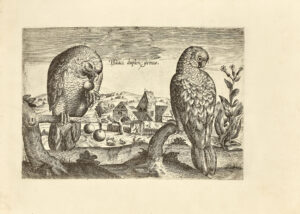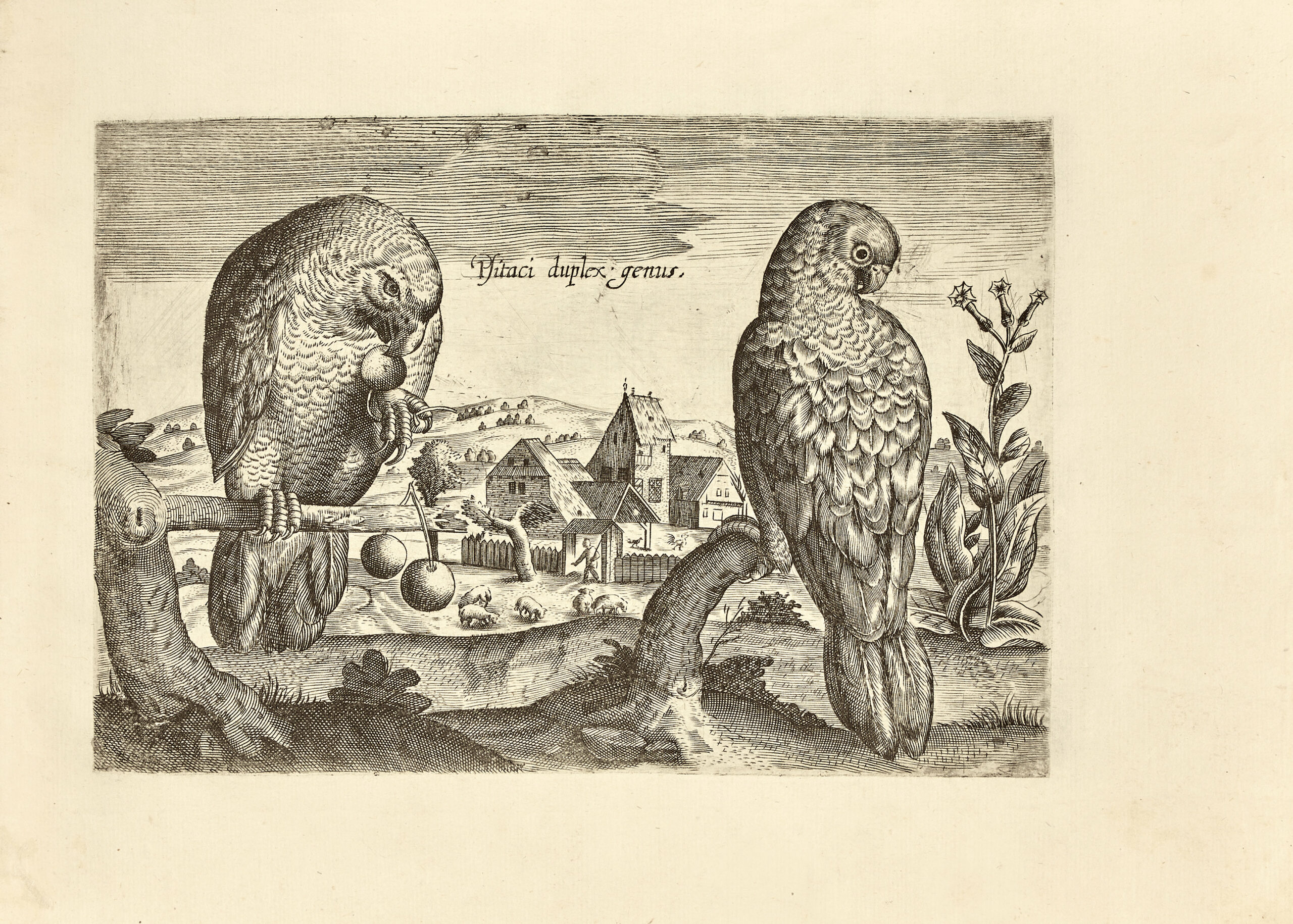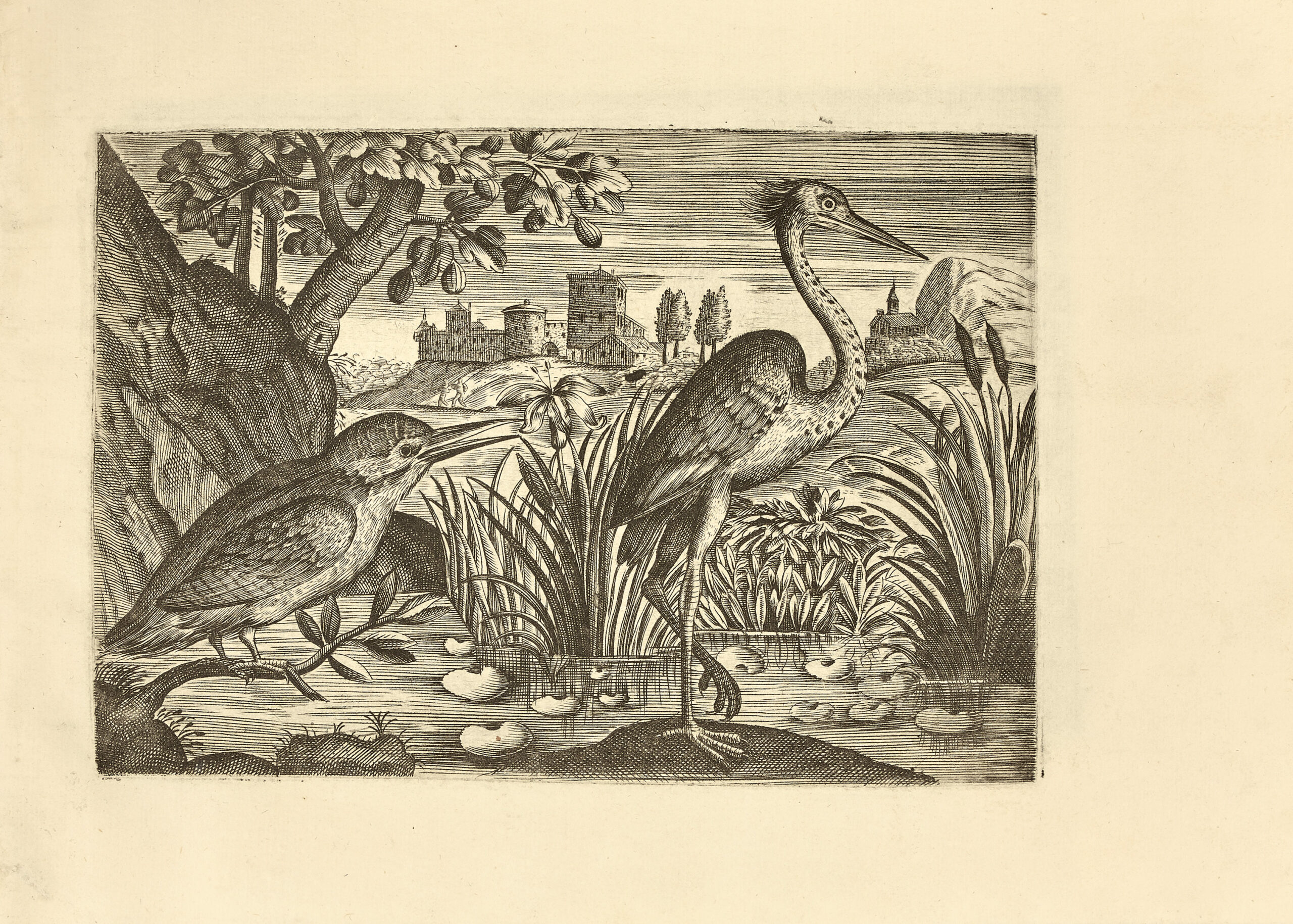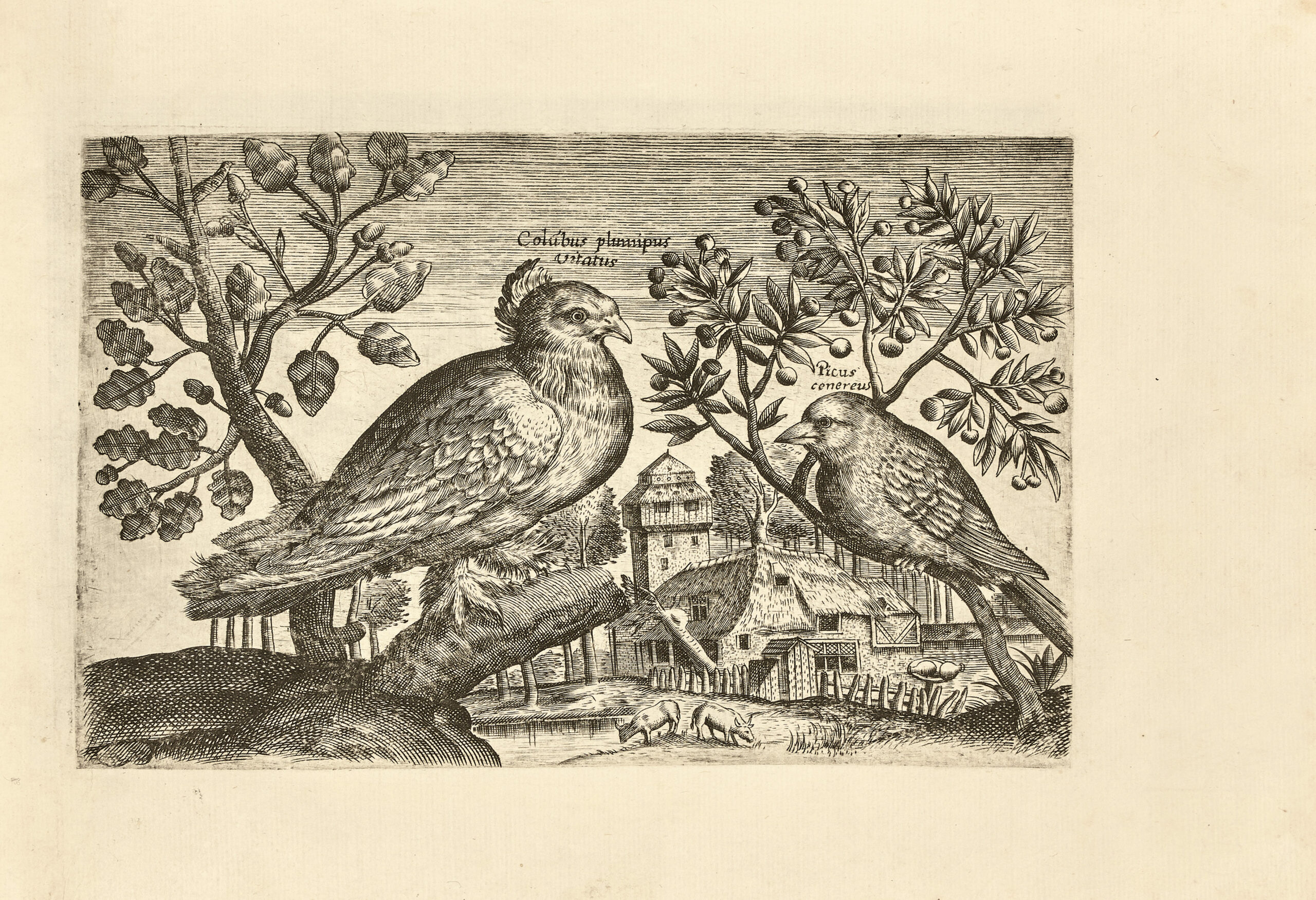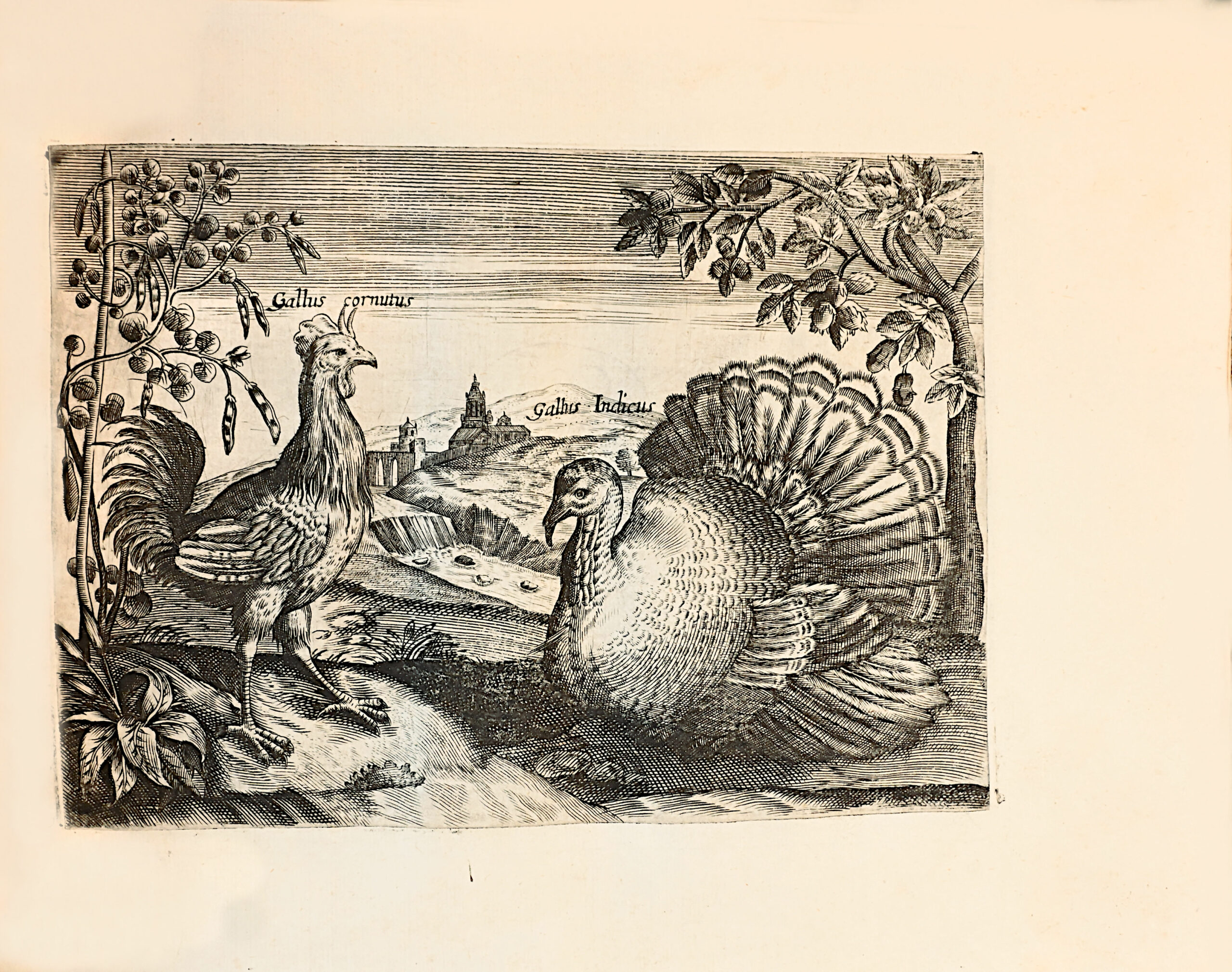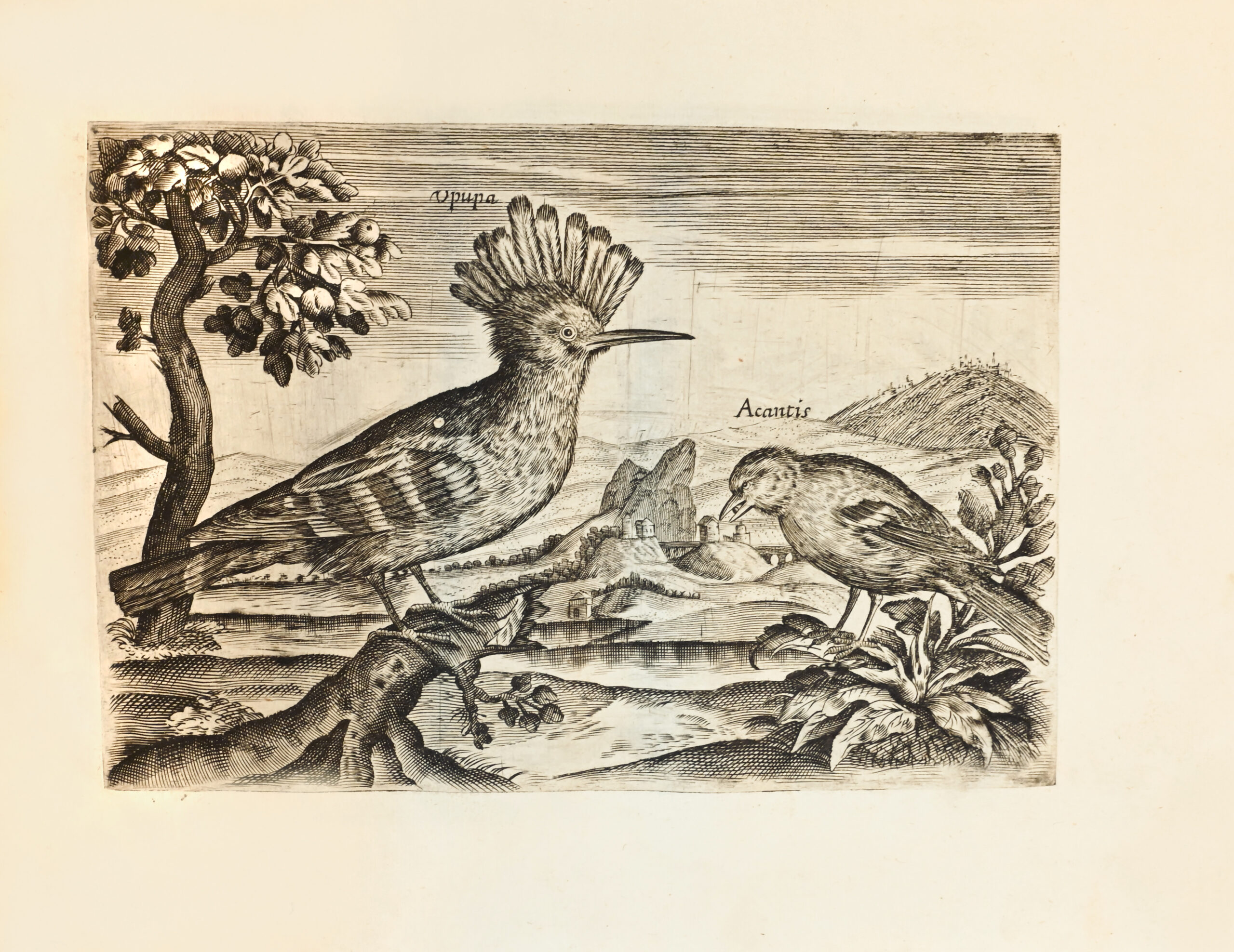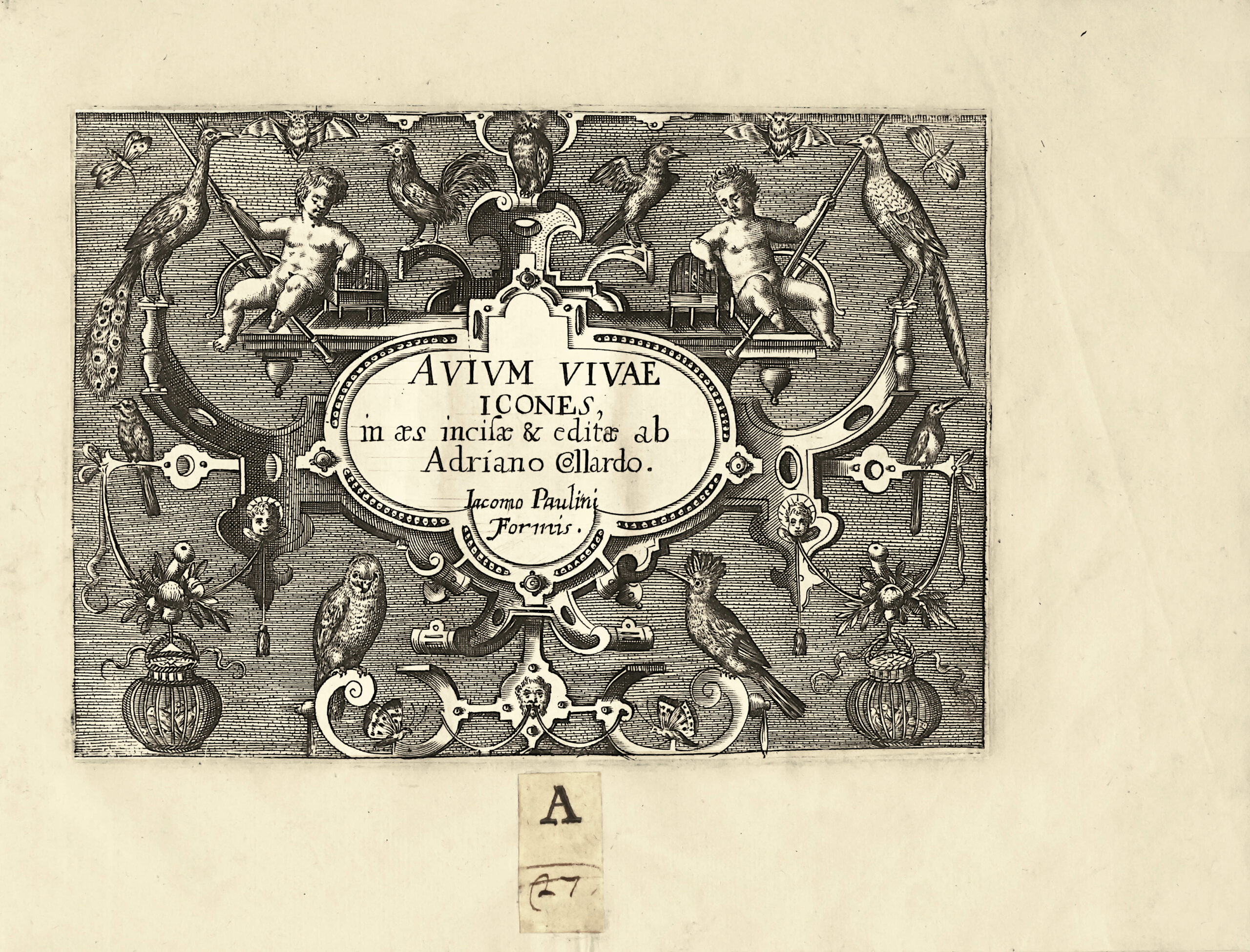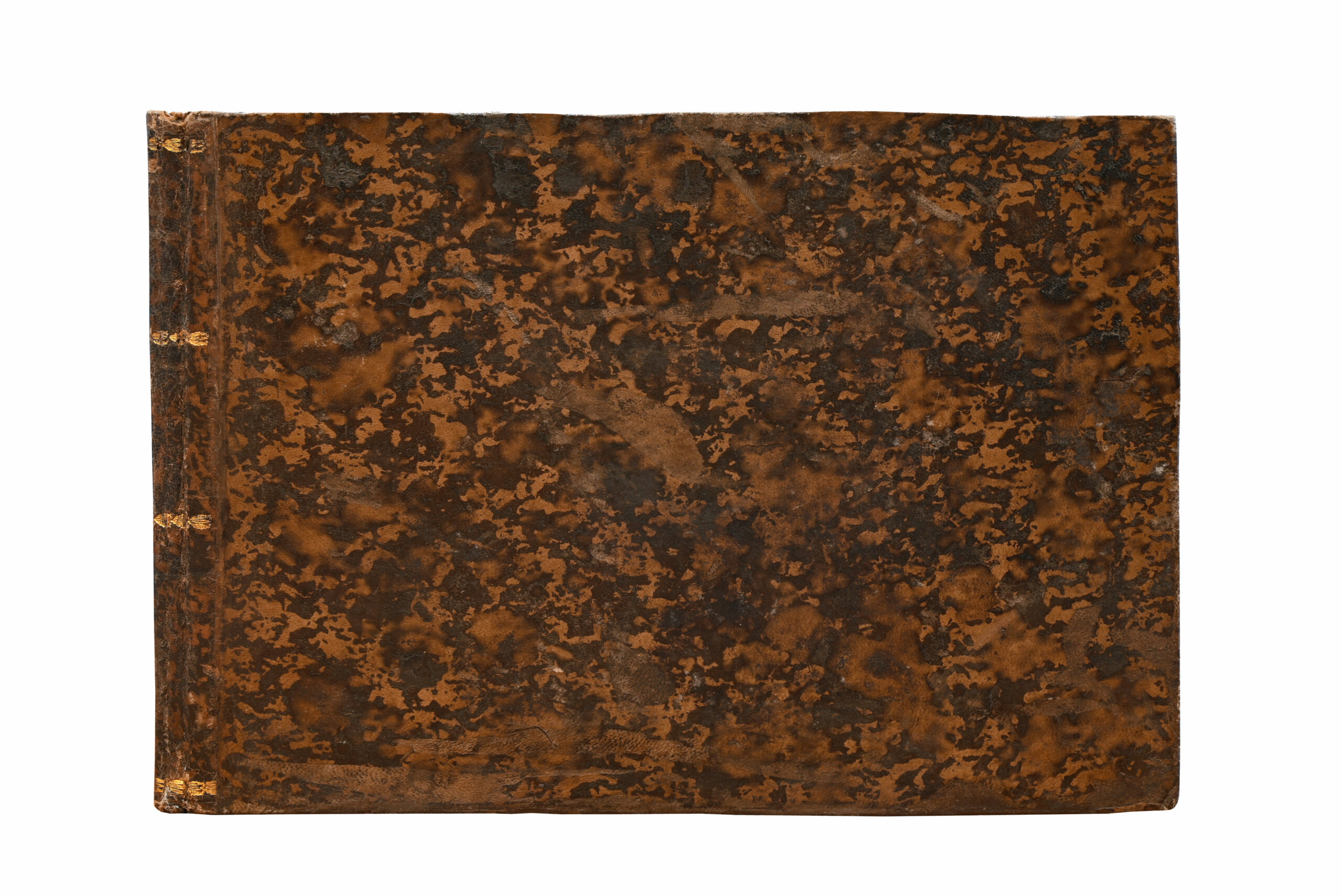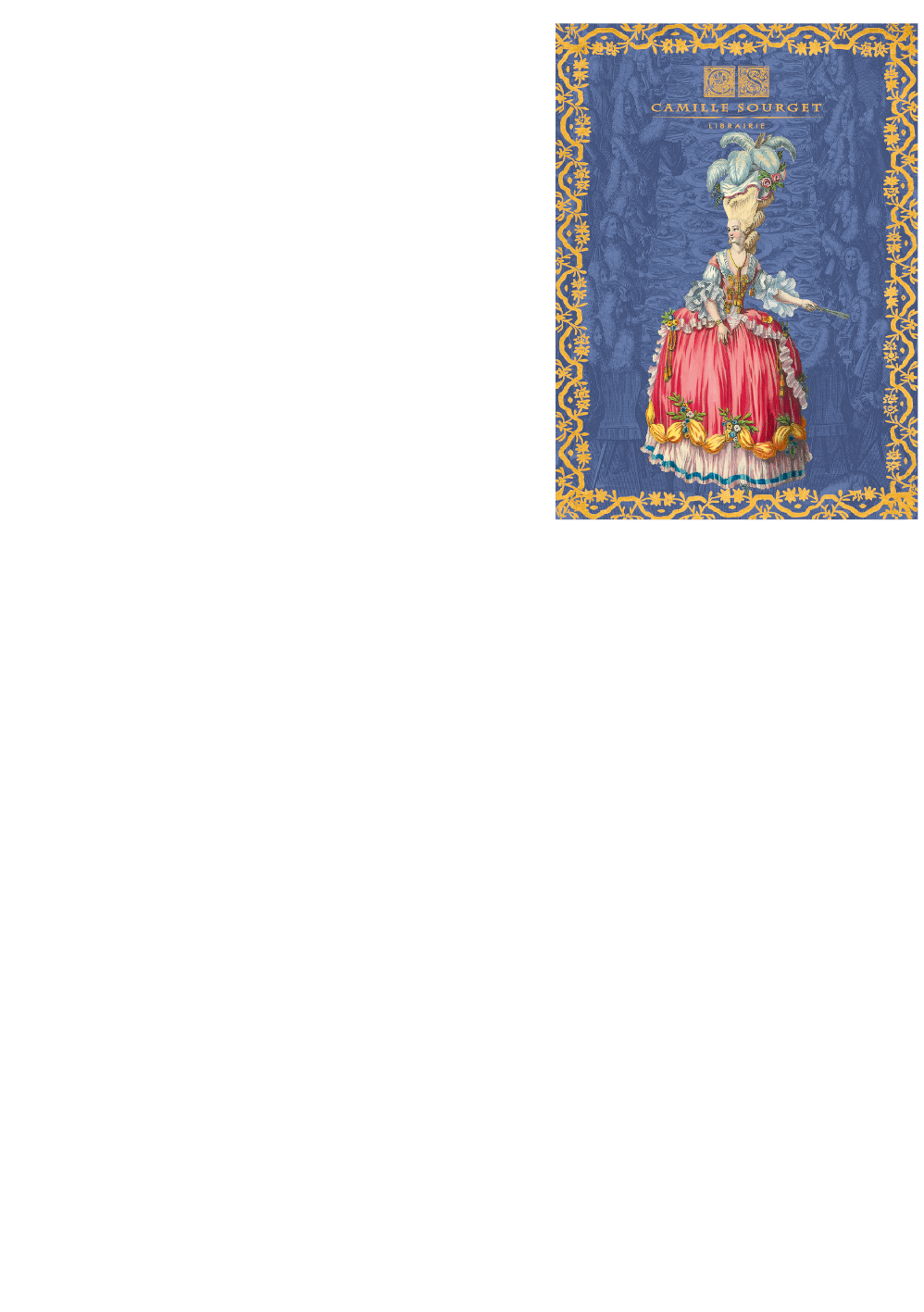[Venice, Iacomo Paulini, ca 1580-1600].
In-4 oblong, titre gravé et 15 planches. Basane mouchetée, dos lisse. Reliure ancienne.
191 x 260 mm.
Manifestement la première impression de cette célèbre série de gravures ornithologiques.
Copenhage/Anker 14 ; Ellis/Mengel 533 (later ed.) ; McGill/Wood (later ed.) ; Nissen, IVB 199 ; Ronsil 616.
Collaert a gravé ces planches à Anvers, mais elles ont manifestement été envoyées en Italie pour y être publiées.
« Pour des bourses modestes, on édita aux Pays-Bas à la fin du XVIe siècle et au début du XVIIe de petits albums de planches sur les fleurs et sur les animaux. Un des plus remarquables est le petit livre d’oiseaux en deux volumes du graveur sur cuivre flamand Adriaan Collaert (Anvers, ca. 1560-1618). De lui personnellement, on connaît peu de chose : on sait qu’il fut reçu dans la Guilde St-Luc et qu’il épousa en 1586, la fille de Philippe Galle, graveur sur cuivre et éditeur d’estampes, dans l’atelier duquel il débuta.
Sous les titres « Avium vivae icones » et « Avium iconum edition secundo » paraissent, exécutées de la main de Collaert respectivement en 1580 et aux environs de 1600, deux séries de 16 gravures d’oiseaux. Dans la première, chaque oiseau est pourvu d’un nom latin. La plupart des figures représentent des espèces indigènes, comme la pie, le geai, l’étourneau, le moineau, la mésange charbonnière, le jaseur d’Europe, etc. On y voit aussi quelques espèces sélectionnées d’animaux domestiques : le coq, le pigeon, etc., ainsi que des oiseaux exotiques : l’autruche, la grue couronnée, la pintade et le perroquet. La deuxième série numérotée de 1 à 16 (page de titre comprise), n’est pas une réédition de la première, comme le titre le laisserait supposer, mais une suite. Après quelques oiseaux indigènes, qui figuraient déjà dans le premier recueil, le choix s’étend aux oiseaux plus rares, aussi bien indigènes qu’exotiques. Le plus souvent, on trouve deux sujets présentés sur une seule planche, mais le rapport de grandeur d’une espèce à l’autre n’est pas respecté. Par contre, les oiseaux semblent en majeure partie dessinés sur le vif. Leur attitude, par exemple celle du perroquet qui manie des cerises, est très naturelle. En opposition avec ses devanciers, Collaert présente ses oiseaux dans un paysage et place au premier plan, sur la plupart des planches, une plante ou un arbre facilement reconnaissable. Sans vouloir trouver en lui un précurseur de ceux qui ont représenté l’habitat, on peut, en tout cas, soutenir que sa nouvelle façon de présenter les oiseaux est à l’origine des plus belles illustrations ornithologiques postérieures.
« Les planches d’oiseaux d’Adriaan Collaert ont de surcroît une grande valeur scientifique. A. C. Oudemans voit dans l’Avis indica d’A. Collaert, la seule représentation connue de la Laguatia gigantea Schlegel, que les marins néerlandais avaient ramenée vers 1599 ou 1600 de l’île Maurice et qui avait été exposée dans le jardin du comte van Solms sur le Boitenhof à La Haye. Dans les Voyages et aventures de François Leguat et de ses compagnons en deux îles désertes des Indes orientales (Londres, 1708, p. 171), on rencontre la description de cette bécasse que Schlegel baptisa Leguatia, parce qu’il croyait que la gravure de Leguat était la seule image de cette espèce éteinte. On peut donc dire que la planche de Collaert est l’unique bonne représentation de cet oiseau disparu. Si Schlegel l’avait connue, il aurait peut-être donné au Géans le nom de Collaersia » (Catalogue d’exposition de la Bibliothèque Royale de Belgique « En toute sorte de plume », 1968).
Les éditions « De l’Avium vivae icones » données par la bibliothèque royale de Belgique sont les suivantes :
- Avium vivae icones, in aes incisae et editae ab Adriano Collardo, 16 pl. titre compris, 8° obl. Antverpiae, s.d. [ca. 1580 selon Engeilmpan), et non 17 feuillets indiqués par Nissen (199).
- Avium iconum editio secunda. Adrianus Collaert fecit et excudit. 16 pl. Antverpiae, s.d. 4° obl.
- Avium vivae icones, in aes incisae et editae ab Adriano Collardo et Theodaro Galineo. 8° obl. 32 pl. s. loc. [Antverpiae], s.d. [1637].
- Avium vivae icones, Adriano Collardo inventore, excisae apus C. J. Visscher. Anno 1625. [Antverpiae]. Suivant Nissen 18 pl.
- Casey Wood signale aussi un Avium vivae icones, Anumtissima imitatio earum atiae incisea et edige sunt… édité par G. B. Rossi, Piazza Navona, [Roma]. 16 pl. (frontispice inclus). Puisque Hollstein, qui, jusqu’à présent a dressé l’inventaire le plus complet de l’œuvre de Collaert, ne la signale pas, il n’est donc pas sans intérêt de joindre ici une description de cette édition italienne, d’après l’exemplaire de la McGill University Library : « one of the artist’s earliest and best album of bird life. Evidently first states of the plates and before all letters (except the systematic natures of the birds). A very clean, clear copy. Very rare in this condition.
- Enfin Clauss Nissen signale encore une édition contenant 30 illustrations chez F. de Witt, à Anvers, aux environs de 1640. »
« This little collection of plates possesses considerable charm, the birds being pictured in a lively fashion and many of the back grounds including not only carefully drawn botanical specimens but also scenes of human activities and habitations » (Ellis/Mengel).
Exemplaire d’une grande fraicheur et à très grandes marges.
Provenance : étiquette de bibliothèque A/27 sur le titre.
